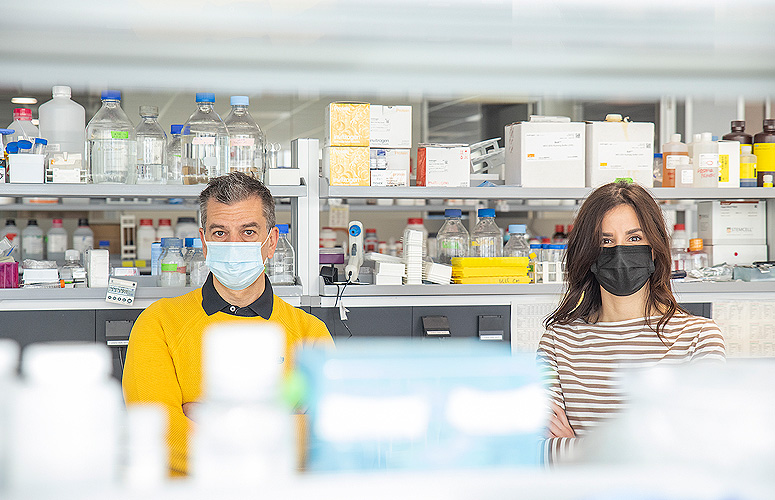UPV/EHU research characterises the atrophy that takes place in brain cells and caused by the most common variant of Parkinson's disease
Paula Ramos-González of the Achúcarro Basque Center for Neuroscience publishes the results of her thesis in the journal "npj Parkinson's Disease" of the Nature publishing house
- Research
First publication date: 24/05/2021

The researcher Paula Ramos-González of the Achúcarro Basque Center for Neuroscience has identified the atrophy of brain cells, known as astrocytes, that occurs as a result of the most common genetic variant of Parkinson's disease. The results of the thesis represent an important step forwards in the quest for therapies to alleviate these dysfunctions in the development of mechanisms allowing the disease to be corrected or mitigated.
The technique involving cell reprogramming makes it possible to generate new neural cells from skin biopsies of healthy or diseased donors, which are used to investigate the generation and development of diseases such as Parkinson's disease, one of the main neurological disorders.
Astrocytes are the most numerous cells in the central nervous system; they are present in the brain, and play a key role in brain health; when functioning properly, they play an important role in neurological diseases. In recent years, the possibility that astrocyte malfunction may contribute towards the damage that occurs in Parkinson's disease has been explored.
Within the framework of the PhD thesis by the researcher Paula Ramos-González, an international team has generated astrocytes from healthy donors and from patients with the most common mutation in Parkinson's disease, which is located in the LRRK2 gene.
With this work, astrocytes obtained from patients with the LRRK2 mutation have been found to display significant morphological atrophy and metabolic dysfunction, which may suggest a deficiency in their neuron-supporting function. Based on this discovery, the next step will be to generate "brain organoids" from the same cells of patients in order to study a therapeutic approach that could alleviate the effects of these dysfunctions, thereby contributing towards a better understanding of this disease and, ideally, towards developing mechanisms to correct or mitigate it.
This scientific work has been conducted entirely in the laboratories of the UPV/EHU-University of the Basque Country and the ACHUCARRO centre on the Bizkaia Campus, and has been published in the journal "npj Parkinson's Disease", belonging to the "Nature" group, with open access, in order to make it available to other research groups throughout the world investigating the same disease.
Bibliographic reference
- Astrocytic atrophy as a pathological feature of Parkinson’s disease with LRRK2 mutation
- NPJ Parkinson’s Disease
- DOI: https://doi.org/10.1038/s41531-021-00175-w

